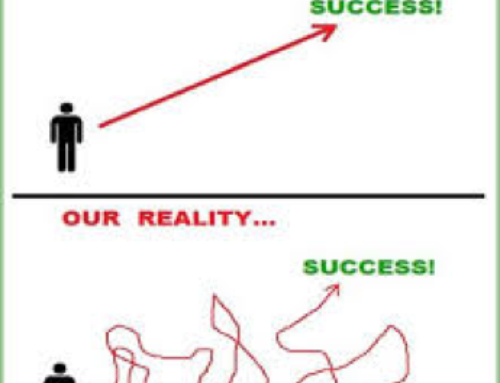Yes it’s that time of year again, the festive season, where Christmas work functions, family gatherings and celebrations with friends spring up left, right and centre with a plethora of gratifying foods and drinks on offer. It’s hard to stay on track and be consistent at the best of times; I have seen this time of year derail even the most conscientious health nuts!
If you’re serious about getting results and reaching the fitness and physique you’ve always dreamed of, you’ll need to consider your exercise, your nutrition and your motivation. To me, these are the most important factors and should be considered in three main areas:
1 DESIRE – this is the motivation that is driving you.
2 PLAN – for both diet and training.
3 CONSISTENCY – sticking to your guns.
Put simply, once you’ve built the desire to get somewhere, you need a plan to get you there and then you need to STICK TO IT.
Much of what we do as trainers is just keeping people on track. Anyone can get a program or diet from a trainer, doctor or nutritionist or even out of the latest Women’s Day magazine, but it’s only the rare few that have the perseverance to stick to it. So, if you are setting goals for the New Year or a ‘New Year’s resolution,’ take a closer look at each area in more detail to get you on your way.
DESIRE:
I have often said in the past that the factor of primary importance in any goal achieving is motive, and my belief in this has only grown with experience. Without an internal drive there is no real action, not consistently anyway, and without action there’s no results. It is imperative that you look inside and find a reason that really motivates you. If your desire isn’t strong enough there will be no motive to push you along your journey to achieving your goal and your hopes of sustaining a challenging routine are diminished.
What we effectively do in our minds when setting goals and thinking about them constantly is set up a mindset where the training and healthy lifestyle are the reward and the once pleasurable temptations of lounging and binging are painful turn-offs. If this mindset is affirmed consistently enough, as seen in every motivated athlete, there will be a constant drive, or want, to workout. You’ll then begin to gain pleasure from the experience rather than feel like you are getting on with a chore.
The idea is simple, yet rarely adhered to. You simply need to envision in your mind exactly what you want and dream as though you are already living it. What would life be like for you if you were at your health and fitness goal? Literally live and feel the experience in the present tense. See and feel how good it really is to be there. Hold that vision in your mind and think about it often. The more often you ‘live it,’ the more you’ll see the beauty of it and be driven by its proximity.
Motivation is all in the mind!
PLAN:
Set yourself a schedule to organise your healthy meals and diarise your daily training sessions. Use the tips below on diet and training.
Diet:
Most people, believe it or not, ‘under eat’ in their bid to lose weight. Sure, there are plenty of indulgers that eat an over abundance of the ‘nutritionally void,’ but a large portion of people aiming to lose weight don’t consume enough calories at the right time to stimulate the metabolism and keep up their calorie expenditure.
We all know that we should consume the three macronutrients (carbohydrates, proteins and fats) over five to six smaller meals per day and doing so will help stimulate the metabolism. You then need to aim to consume between 1.2 – 2 grams of protein per kilo of body weight each day, and of course, spread this intake out over the five to six meals. Now, if you’re not accustomed to counting grams when you eat you may want to use the data below as a rough
guide to working out how much protein is in each meal:
|
Main Protein Sources |
Grams of Protein |
|
Cottage Cheese & Low Fat Cheese (per 100g) |
11 – 25g |
|
Yogurt & Other Low-Fat Dairies (per 100g) |
5 – 7g |
|
Lean Chicken, Fish, Red Meats (per 100g) |
25 – 30g |
|
Eggs (egg whites) |
6g (3g) |
|
Beans (per 100g) |
8g |
|
Protein Powder Drinks (average) |
25 – 30g |
|
(All other canned or packet foods have their content labelled) |
|
Next, aim to reduce your fat intake, you won’t be able to cut it out completely and you don’t want to. Just aim to get rid of as much of the saturated fats as possible and ensure the fats you do eat come from mono or polyunsaturated and omega 3 and omega 6 sources (fish oils and vegetable oils).
As for carbohydrates, they are the ones that vary the most, as different people require different amounts, but if you follow the guidelines below you may get a better idea of how much you require and from what sources to get them from:
1 If you are not very active throughout the day (if you have a sedentary occupation) you’ll not need an abundance of carbohydrates, so limit your intake to the first three meals of the day. This is the only time you’ll need the energy – while you’re working!
2 Eat mostly unrefined carbohydrates like rice and potato or from vegetables, instead of pastas and breads.
3 If possible, consume most of your intake from fibrous vegetables and low G.I. fruit, especially after lunch.
4 If you labour through the day, you’ll need more of the complex carbohydrates throughout the entire day. At least two, and up to four grams per kilo of weight per day.
Training:
The most important part of training is regularity. Aim for daily activity and incorporate both resistance and aerobic exercise. If possible, even try to fit in two sessions a day for greater results. For example, some people prefer to do their walking/running or cardiovascular exercise first thing in the morning before work and then do their weights later in the afternoon when they have more energy for the higher intensity bouts, while others prefer visa versa. It doesn’t matter – just do it. The regular combination of weights training and cardio will have the effect of turning your four cylinder metabolic engine into a V-8 doing laps around the block all day – burning lots and lots of calories.
CONSISTENCY:
Consistency is better than brilliance.
Set small, regular goals and celebrate the achievements. Focus on three kilos at a time rather
than 20, or focus on running for 10 mins nonstop before thinking about the marathon. Find a training partner, join a group, or register for an official event that gives you something tangible to focus on. Above all, the number one key to consistency is simply learning to enjoy it. Find the pleasure in the activity of getting away from the usual day to day grind, a time when you can just
focus on you and find the fun in the challenge of setting small physical and mental goals and achieving them. All the motivation in the world to perform a chore will fall a distant second to doing something you love. You don’t have to try doing something you enjoy, it’s easy.





